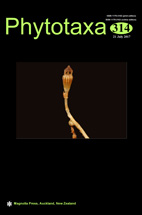Abstract
Recent molecular studies revealed the polyphyletic nature of the broadly defined genus Polygonum. This paper includes a standard maximum parsimony (MP) and three-taxon statement analyses (3TA) as well as a taxonomic revision of Polygonum sect. Avicularia subsect. Spinescentia (Polygonaceae) as compared with two closely related taxa: genus Atraphaxis s.s., and genus Bactria. In total, 27 characters, including life history, habit, morphology of the shoots, leaf blades, ocreas, perianth, achene, ultrasculpture of perianth and achene surfaces, as well as pollen morphology, were analyzed, illustrated, and discussed in detail. Both the standard MP and 3TA confirm that monophyletic Polygonum subsect. Spinescentia is sister to the narrowly defined Atraphaxis. The genus Persepolium (Polygonum subsect. Spinescentia), with the circumscription of five species, is established as new to science as a result of this study. Possible transformations of perianth and thyrse morphology are discussed within the framework of the Principle of variable proportions by Troll in connection with a shift of pollination mode in the group of taxa studied.

